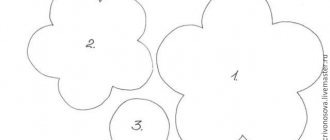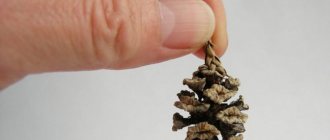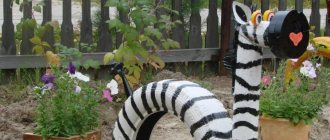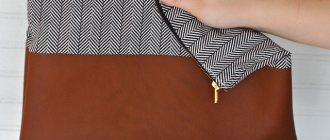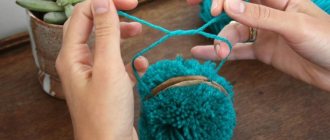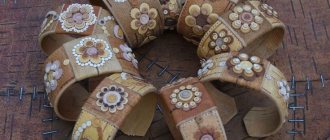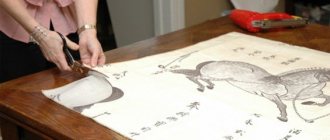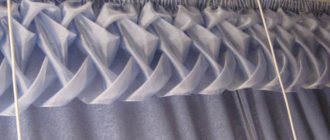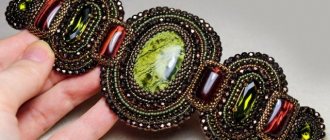See with my own eyes
Photos of finished crafts made from matches make you want to buy 100 boxes of this amazing material at once and try to make something similar yourself. Not only children enjoy this activity.
Adults create unique products from matches, which are included in the Guinness Book of Records. Like, for example, the owner of an oil match platform, who worked on its creation for 15 years.
What can be made from matches
Some people believe that only houses can be built from match material, but this is not true.
- Fence. People who have not previously made match structures can create a small fence. This craft is very simple and you don’t have to spend a lot of materials to create it. To make a fence, 10-15 matches are glued together.
- Church. More experienced people can make a small church. On average, 1000-1200 matches are used to create it.
- Furniture. Many people prefer to create miniature furniture from wooden sticks. The easiest way is to make a small table, cabinet or stool.
Notes for the future jeweler
Small objects in a child’s hands help develop motor skills, and therefore the brain. Any work requires attentiveness and accuracy. During the construction of turrets and houses, children develop their imagination, creative interest and aesthetic taste.
Exercises with matches develop perseverance, patience, and accuracy. These are the qualities that the future dentist, jeweler and surgeon will need.
Arrangement of the workplace
From the very beginning of training with matches, you need to properly equip your workplace. Place yourself with the necessary materials by the window or place a bright lamp on the table.
For a successful result, it is advised to follow the recommendations:
- Cover the working surface with plastic wrap;
- Do not use glue directly from the tube; it is better to pour it into a jar;
- Apply the adhesive onto the match with a thin object;
- Use only smooth and even material on the front side of the product;
- Cut off the match heads with a sharp knife.
How to make a church out of matches
Making a church is not an easy task, but the final result is worth it. For this craft you will need approximately 2000 matches.
- Start construction with a single-layer square; you need to assemble it so that the matches are located in one direction.
- We assemble the second square so that the parts with sulfur are only on the top and on one side; all excess sulfur must be cleaned off.
- In the square that was made first, we build vertical walls with another layer.
- We build another layer of walls so that all the sticks are located in one direction.
- We assemble the same square as the first one, only we place the sticks in the other direction.
- We put the cubes together. On average, we make another layer of walls, on those sides where it does not come into contact with other squares.
- Connect the cubes by pushing wooden sticks into them. Make the back wall smooth using a blade.
- Let's duplicate our design.
- We create a standard square by cleaning off the sulfur on top.
- Trim the cube by trimming the logs.
- Trim the platform of one cube and on the bar.
- We insert 8 sticks into the prepared cube (with their help it will be attached to the bar).
- We connect in the prepared place.
- We make a second leg and prepare a second square on the plank so that everything fits together well and push the inserted matches through another one. There should be an arch under the middle square so that it holds well (you can add additional sticks).
- We repeat everything for the second plank.
- We are preparing the middle bar. We build 3 cubes.
- In the two outer cubes, in front, we place logs horizontally, and on the other sides we also place them only vertically and clean them, making the surface smooth.
- We place logs in the middle square, vertically on the sides and make them even, and lay them horizontally in front and behind.
- Let's connect our cubes.
- Using matches, we connect this structure with ready-made planks, placing it between them.
- We make slopes by simply pushing the sticks from the inside.
- We make small turrets on the sides of the structure, placing 5*5 matches, filling them with horizontal half-matches. There are 4 turrets in total.
- Domes can be made using foil. You can also decorate the church by making crosses and don’t forget about the doors and windows.
Your beautiful church is ready.
There is also a simpler option - a church made of one cube. You can watch the instructions for it in the video:
Good Instructions
Instructions for creating crafts help you create an architectural ensemble from matches. You can buy it at a children's toy store or order it online. The manual is called “Crafts from matches step by step with your own hands”, it explains how to assemble complex structures.
The instructions describe in detail the name of the material and its quantity for making the craft. The leaflet gives recommendations for sorting wood chips, because the appearance of the product largely depends on their quality.
The instructions tell you what tools to prepare for the job. For better preservation, it is recommended to varnish the manufactured item.
Note!
- DIY military crafts step by step: 150 photos of the best craft ideas for children for school or kindergarten
- DIY crafts for May 9 step by step: 150 photos of the best crafts for Victory Day
- DIY crafts for February 23rd step by step: master class with photos and descriptions of how to make crafts for Defender of the Fatherland Day
What else can you make from matches?
You can create many different masterpieces from matches: castles, wells, benches, fences, and much more. There are many step-by-step instructions on the Internet on how to do this.
You can create excellent beautiful furniture for our house, for example a chair.
How to make a chair from matches
- Cut off the heads with sulfur.
- Take two sticks and place them parallel.
- Take another stick without sulfur and cut it into two equal parts.
- Glue these two halves to two parallel ones. You will get a back for the chair.
- Take a whole match and cut off the excess part from it so that the remainder is equal to the width of the back of the chair.
- Glue this piece in the center to create the back base. Below will be the back legs of the chair.
- Cut another similar base and glue the chair legs to it; they should be the same length as the back ones.
- Divide another log without sulfur into two equal parts.
- Make a side base out of them, gluing it to the back one, then glue it all together with the front legs.
Cut 8 logs equal to the width of the seat. Place them tightly together and connect by gluing two crossbars. Glue one more such log on both sides of the resulting seat. Place the finished seat on the high chair.
Our chair is ready.
According to the scheme without errors
Before starting work, carefully study the schemes for creating crafts from matches. Knowledge helps to assemble the structure correctly and not redo it during the process. The diagrams contain step-by-step instructions indicating how much material should be used at each stage.
For crafts with intricate designs, drawings are first developed and accurate calculations are carried out. Success accompanies those who are well prepared for the creative process.
Additional elements and changes can be made to the basic schemes if the execution technique is mastered successfully.
Tower of matches without glue (video)
Take some wire and foam! Bend the wire into the shape of a bucket, and cut out balls from foam plastic and put them on the wire, you can paint the balls. You can cut out balls from a dish sponge instead of polystyrene foam)))
Well, you're lucky it's Ursa Major and not Orion. In Ursa Major, the stars of the bucket are close relatives and are at the same distance from us; in Orion, the stars only in the sky seem close, some are nearby, some are very far away; a three-dimensional wire model wouldn’t fit into your house!
By the way, why are you asking? They asked it from the child! Or do you want him to grow up lazy, lying and armless? You are now teaching him to lie - “I did it.”
Matches are an affordable craft material that requires perseverance and patience. People have been making crafts from smooth wooden sticks since their creation.
The sizes of the masterpieces are limitless: from small houses to huge models of world-famous buildings and samples of technology. A model of an oil platform has been registered; it weighs almost a ton, reaches 4 meters in height, and six meters in width.
Several master classes for beginners will help you master the simple technique of creating flat panels and three-dimensional products. Perhaps after small crafts you will want to take on larger forms.
Matches are an environmentally friendly material that children can use. How to get rid of sulfur heads, read below. The creative process develops motor skills and attentiveness. The job requires intelligence and endurance. Working with matches teaches you to achieve your plans and strive for your goal.
Attempt at writing
Crafts made from matches can be made flat or three-dimensional with your own hands. Kids enjoy working with this material. On thick cardboard they create appliqués depicting a house, the sun, or a tree.
Having drawn the outline of the animal on paper, the child fills it with tightly glued wood chips. It turns out to be a panel that you can give to your mother. How much joy children get when they see the result of their creativity.
Sun for children's crafts
The materials for work are similar to the previous method, but for the frame of a three-dimensional craft you will need any small plastic ring.
The sun for a children's product can be created on a cardboard base, or you can make it a light and mobile option. To make a three-dimensional model, you will need to prepare two circles of slightly larger diameter from yellow cardboard.
Matches are glued to the back of the plastic base to form a sun. Next, cardboard parts are glued on top of the plastic circle so that they hide the junction of the matches and the plastic.
You can decorate the sun by adding a funny face to it.
3D images
Photos of three-dimensional products made from matches amaze with their beauty and originality. The flight of imagination of the craftsmen working with this material is limitless.
But for beginners, matchstick crafts shouldn’t be too complicated. Failure the first time can discourage you from taking up an exciting hobby.
Children learn to make stars, pyramids and other objects by holding wood chips together with glue. The child connects craft materials with balls of multi-colored plasticine. The result of creative efforts are animal figures and houses.
Useful activity
Crafts made from matches without glue are much more difficult to make. You need to be very careful when connecting thin chips together. Such activities develop imaginative thinking and perseverance in older children.
Adults note that making crafts from natural materials gives them the opportunity to relax and take a break from the hustle and bustle of everyday life. It is interesting to know that almost all matches in our country are made from aspen.
Note!
DIY airplane craft: the best options for creating an airplane from paper, cardboard and plastic. 120 photo ideas
- DIY crafts for March 8 step by step - a review of the most beautiful crafts for International Women's Day (120 photo ideas)
Diaper cake for a girl - 180 photos of ideas for original diaper cakes + DIY instructions with examples of finished products
The first damn is not lumpy
Houses and wells are considered easy crafts made from matches without glue. The product will require 300 matches, a 2 ruble coin and a rigid stand.
First, a well of 7 rows is built, and the chips are laid with their heads in a circle. 8 pieces are placed tightly on top, 6 more on them, and a coin is placed on top. 4 matches are inserted vertically into the formed corners so that they rest against the stand. They do this carefully, holding the structure.
The chips are placed around the coin with their heads up; there should be 24 of them. Carefully pull out a coin that will no longer be needed.
How to make a house from matches
To make such a house you do not need to have any special talent, you just need to know the stages of assembly, be careful and have patience.
You will need:
– 7 boxes of matches
— 2-3 coins of large diameter
- disc box.
1.
Prepare a base for the craft - it could be, for example, a CD box - and place 2 matches parallel to each other on it.
2.
Place 8 matches perpendicularly on the lying matches (the foundation of the house) - this must be done so that there are gaps of the same size between the matches.
3.
Place 8 more matches perpendicular to the previous ones (using the same principle).
4.
Now start laying matches around the perimeter as shown in the image. You need to make 7 rows (the heads of the matches should go in a circle).
5.
Place 8 matches on the last row so that their heads face in the direction opposite to the first row of 8 matches (the foundation of the house).
6.
Perpendicular to the top 8 matches, place 6 more matches in the middle, and place a coin on top of them.
7.
Between the last two rows, holes have formed in the corners; you need to insert 1 match into them. While you insert matches, hold the structure.
8.
Now stick one match into each gap along the walls and cover the perimeter (see picture).
9.
Adjust the structure with your fingers so that all the matches fit snugly against each other.
10.
Try to complete the walls of the house by sticking matches along the perimeter of the walls with their heads up.
11.
We make a horizontal layer of walls. Insert matches around the perimeter so that their heads alternate with the ends. After this, press in all the matches that start from the head.
12.
Let's start making the roof of the house. To do this, you need to insert matches along opposite walls (see picture).
13.
Alternate the direction of the matches and insert them perpendicular to the ceiling of the house.
14.
First you need to put 2 matches, then 4, then 6 matches in the two central ones, eight each.
15.
Next we make a roof (see picture), windows, doors and a pipe from match halves.
Video lesson
Completion of the house
The structure made from matches is boldly picked up, without fear of being destroyed, and turned over. They hold the house in their hands and build walls, placing building material around the perimeter in a vertical direction. This consumes 28 matches.
After this procedure, horizontal rows are built. The result is a strong and stable structure. How to make a roof, it is more convenient to watch the video of the master class.
Making a house without glue
To get started, place all the necessary materials on the table and begin assembly. Two matches must be placed next to each other in parallel, but in such a way that the distance between them is slightly less than the length of the match itself.
On these two a flooring of eight is made
It is very important that the matches lie flat and perpendicular to the base. To make the house more beautiful, we lay the flooring with its heads in one direction.
Then another layer, also of eight pieces, is laid on top of the first layer. It should be perpendicular to the first layer
It is very important that the distance is equal, be careful when working
Assembling the walls
After this, a “well” is made of seven rows, and the heads of the matches from which the “well” is laid out should be arranged in a circle. This is a very delicate and painstaking work that requires attention and concentration.
The top flooring is laid over the “well”. Like the bottom one, it should be made of eight pieces. It will be more beautiful if the direction of the heads of the top layer is opposite to the bottom.
The second top layer is placed first from six pieces. The two extreme ones are added a little later. We press the resulting structure with a coin on top. This is necessary to prevent matches from sticking to your hands. Otherwise, the still unstable structure could collapse. Therefore, at this stage of work, you should hold the structure with your finger.
Strengthening the structure
To secure the structure, it is necessary, carefully holding it, to stick four pieces vertically with their heads up in the four corners between the top and bottom layers. (This is why the top layer consists of six matches).
Do this carefully, carefully and make sure that the house does not fall off the base
As a result, the base of the structure is slightly strengthened, which allows us to proceed to the main stage of assembly.
Next, you should carefully insert matches along the walls around the perimeter
After this, you need to squeeze the walls on all sides and remove the coin. It won't be needed anymore.
Then take the house in your hands and level it on four sides.
To level, you need to press the matches located around the perimeter so that their heads touch the flooring. The resulting square will be the foundation. The structure is now sufficiently strengthened for further action.
At this stage, the resulting frame, with the ends of the matches sticking out, will be more convenient to assemble by hand. So, the ends that were inserted around the perimeter will be the top part, and the opposite side will be its base.
Making walls will not seem difficult if the cube turns out smooth. The walls are laid in two layers - vertical and horizontal. First, insert the matches vertically on one side.
The same manipulation is done with the three remaining sides. To make it beautiful, insert the matches with their heads in one direction. For example, up.
Next, the walls are laid horizontally. As with the construction of a “well,” the heads should be laid in a circle and alternate with the ends. After installing all the matches of the four walls, it is worth pressing the horizontal matches so that they are pressed against the opposite wall.
Making a roof
The house is almost ready. All that remains is to build the roof. To do this, you need to insert the required number of matches into the corner holes and pull the vertical ones halfway up. This can be done without fear, since the walls are sufficiently strengthened.
Place the matches that will be used for the roof perpendicular to the flooring. We start from the edge and alternate the direction, first two pieces at a time, then four at a time, then six at a time, and eight pieces at a time in the middle row.
Now you can start laying the tiles. Between those sticking out vertically, matches are inserted like a roof deck. They should point their heads towards the middle. Next, you need to press the “tiles” with the heads of the corners and press them with your fingers.
The resulting house can be decorated in various ways - by constructing a pipe from several matches, making windows and doors from matches broken in half with the heads facing outwards. If desired, the house can be painted or installed as an addition to a larger craft. A souvenir made by yourself will add coziness and bring a lot of joy to your loved ones.
Post Views: 2,455
- How to make topiary
- How to make a flower from a ribbon
- How to make a rose from ribbon
- Handmade mini topiary
Under strict guidance
Classes on constructing crafts from matches for children are conducted under adult supervision. First of all, safety is observed; secondly, it is important to support the child, give practical advice and answer questions. You can make geometric shapes from wood chips and explain their names to your child.
Using this material will help you learn counting. Matches have found excellent use in creating various puzzles that develop logical thinking in children.
Limitless possibilities
Craftsmen create a great variety of crafts from matches and glue, amazing with flights of imagination and arousing admiration. Designs of varying complexity are obtained due to the fact that matches can be cut, broken and glued together.
The ability to work with such material gives you the chance to create an original souvenir as a gift to a friend. Both adults and children can learn to create masterpieces.
What safe glue to use for matchstick crafts
Different brands of glue are suitable for working with matches, but to speed up the creative process it is better to use quick-setting adhesives.
The most popular types of glue among match modelers today are:
PVA-MB (Russia) is a universal adhesive based on a water emulsion of polyvinyl acetate. Designed for gluing wood, so it copes with the task perfectly.
Another advantage of PVA-MB construction and household adhesive is its low price (a liter container of glue in any construction hypermarket costs less than 100 rubles);
Moment Stolyar (Russia) is a modern glue, which is essentially an improved version of PVA. The presence of special additives in the composition ensures excellent adhesion and instant setting of the bonded surfaces.
The glue is sold in convenient 250 ml plastic bottles with a convenient dispenser spout for precise application of glue, costs about 150 rubles;
Moment Installation Instant Grip (Germany) is a universal express adhesive for instantly gluing wood of any species. Glues in a matter of seconds, without requiring fixation of the surfaces to be glued.
After drying, like regular PVA glue, it becomes transparent. Sold in plastic bottles of 100 g and 200 g, it costs about 150-250 rubles.
Step-by-step instructions - how to assemble houses from matches and glue
To understand the principle of operation and get better at it, we first recommend building a simple house of matches with any glue from those presented above.
The assembly process is not particularly difficult:
- On a sheet of cardboard that will become the base for the house, we place two matches in parallel. In order for the “foundation” to be without distortions, sulfur should be removed from the first two matches. Then glue the second row of matches according to the picture:
- Using a similar technology, we continue to lay “logs” row by row until the house reaches the desired height;
- For each “knot”, one drop of PVA glue (or equivalent) is enough. Before laying the next row, you need to let the previous one set:
- When the walls grow to the desired height, we mount the ceiling;
- We apply two layers of glue to the finished “overlapping” for structural strength:
- Let's start making a gable roof. It will consist of two parts;
- For reliability, we tie each slope in two rows using glue and an additional match:
- We connect the two parts of the roof into a single structure and install it on the finished box of the house;
- Our first glued match house is ready:
VIDEO INSTRUCTION
https://youtube.com/watch?v=QMmsXYbaZ0g
What else can you do with your own hands using matches?
You can assemble many interesting models from matches - it all depends on the imagination and desire of the author.
We recommend that beginners try to assemble this interesting well:
This craft uses a different method of joining miniature logs.
Here's a quick guide:
Using four matches we assemble the base of the future well in accordance with the diagram
Please note that in this case all 4 matches lie in the same plane; Glue the next rows in the same way. There should be 10-12 of them in total; Then we prepare supports for the future roof: on the inside we glue two matches tightly together to two opposite walls
We increase the supports, using two more matches for each of them; We separately assemble the roof frame and install it on our ready-made supports; We “sheath” the roof, gluing the matches into a continuous shield.
Having gained your first experience, you can begin more serious modeling - for example, making a church out of matches with glue or a small mill.
VIDEO REVIEW
The most important thing is to coat all joints and joints well so that the structure does not fall apart. Excess glue must be periodically removed during work, without allowing it to harden.
Paintings from matches
Master craftsmen lay out entire pictures from matches without using glue. First, several cubes for the panel are assembled. Then they are fastened together and crimped to enhance strength.
The pattern is laid out by sticking matches between the slivers of the canvas. Matches with multi-colored heads are used to create paintings.
We work with children
It has been proven that working with matches strengthens the nervous system. Children are interested in creating panels on colored cardboard. Before work, pour the matches out of the box and put them aside:
The sulfur heads are dipped in office glue and dried. Now matches can be used by children. It's easy to make a beautiful applique out of them. First, the outline of the figure is drawn on the cardboard. The matches are carefully glued along the contour. Then, using the mosaic method, sectors parallel to each other, the pattern is completely filled with matches. If necessary, they are cut to the required size at a certain angle or straight. From a distance, the rows of matches resemble shading. For the template, any contour drawings of animals and toys can be used. If desired, the pictures are complemented with decor.
Making crafts from matches does not require any skills. A school-age child can master the process. Younger children are good at panels. Working with matches requires a lot of perseverance, patience and definitely imagination. Small huts, wells, pictures made from matches can be an excellent gift for friends and family. And large models become real masterpieces.
Chief Assistant
To successfully implement an idea, you need to have a step-by-step guide at hand. There are quite a lot of them on the Internet. By choosing the right and understandable instructions, you have a chance to achieve success from the first steps.
Books are published with images, diagrams and detailed descriptions of crafts made from matches of various objects.
Chamomile from matches
The step-by-step guide to making chamomile tells in detail not only the sequence of actions. It gives advice on how to prepare the material itself for work.
Remove the heads from 4 wood chips with a sharp knife, cut in half and soak in water for 1 hour. Split one end of the soaked matches and let dry. These will be the blanks for the petals.
Matchstick wheels (instructions)
1.
First you need to make an auxiliary tool. To prepare it, arm yourself with a notebook, a simple pencil, a ruler and a compass. You can use a protractor, but this is not necessary.
2.
Draw a template for the machine. In this example, the drawing will help you create a wheel of 15 links. Draw a circle whose radius is 42 mm. Next, divide this circle into 15 equal sectors (each sector has an angle of 24 degrees).
* If you do not have a protractor, make the distance between the legs of the compass 34 millimeters and draw notches on the circle.
3.
Once you have drawn the assembly panel drawing, start making the actual panel itself. A hard cover from an unnecessary book or thick cardboard will help you. In the places indicated in the picture, you need to punch holes in the cardboard using a hammer and nail.
Cut out the drawing and glue it to the cardboard. Choose a nail whose diameter is slightly larger than the thickness of the match. Place an unnecessary book or several sheets of cardboard under the cardboard (so as not to spoil the floor with a penetrating nail).
4.
Once you have the assembly panel ready, start assembling the wheel - if it has 15 links, you will need 90 matches.
* It is advisable to choose matches without defects.
Insert support matches into the panel.
4.1
Now fill the gaps with matches one by one. It is worth noting that each subsequent match in each ring must be placed overlapping the previous one.
4.2
Raise the first match in the ring in advance so that it overlaps the penultimate and last supporting matches.
4.3
Insert and secure the penultimate match, and then do the same with the last supporting match.
4.4
The first two matches need to be pressed back down, and the first created circle of supporting parts then needs to be carefully pressed down so that it lies tightly.
4.5
Using the same method, create a second ring of carrier matches, a third, a fourth and a fifth.
In these images you can take another look at the penultimate and final bearing matches.
* Raise the first match.
* We insert and secure the penultimate match.
* We insert and secure the last match.
5.
Now you need to carefully push the entire structure down. You need to do this several times, and then you can lift the working panel, turn it over and use a match to start squeezing out all the supporting matches one by one.
The diagram shows how to do this one by one in order to eventually pull out the wheel.
To further understand the assembly process, watch the video tutorial:
Final stage
Glue 8 matches onto the tape and cut out two circles from such a shield. They can be drawn using a coin.
Place the petals between the circles, gluing them together. A whole chip is used as a stem. Remove the tape after the glue has completely dried.
Let's get started
The simplest crafts are made with glue: matches are glued to paper, cardboard or other surface, forming a complete composition.
The principle of execution is similar to conventional appliqué, but the difficulty lies in the fact that it is impossible to cut out a full-fledged figure from matches; individual elements are assembled like a mosaic.
To create an applique craft you will need the following materials:
- cardboard;
- matches;
- PVA glue;
- scissors;
- pencil;
- paints;
- varnish
First, a sketch is made on the base cardboard. For convenience, it is recommended to use diagrams for future pictures. Contour drawings are also suitable as a template.
Matches are laid out along the lines of the drawing; they can be cut to the desired size. You can also fill empty spaces in the picture with matches - the composition will be more interesting and complete. Then the finished match pattern is painted with acrylic paints and varnished. The result will be a decorative panel.
Simple applications - children's crafts. Teens and adults can try to create more complex compositions. The dark match heads play the role of pixels that make up the image.
To assemble such a craft, you need to understand how to make a cube from matches. It's easy to do, just follow the guide. For the craft you need to prepare:
- matches;
- tweezers;
- stand;
- a little glue.
Related article: How to weave baubles using straight weaving with video: working according to a pattern with names for beginners
You can make a reusable stand yourself, for example, from a rubber plate using a ruler and a thin drill. The holes should be equidistant from each other and form a square with a width equal to or slightly less than the length of the match.
You can use thick cardboard, for example, from a box, or clay. The stand will make the work much easier, making it neat and level.
Progress:
- Place the matches vertically along the perimeter of the stand, without inserting the matches into the corners (it should look like in the photo);
- Assemble the bottom: place matches between the matches of the two sides;
- Repeat step 2 for the other sides (you will get a lattice);
- Lay two matches parallel to each other on both sides, turn the workpiece and repeat for the other sides (lay out about 6 rows like this);
- Lay out the last two rows as the bottom (steps 2-3);
- Holding the entire structure tightly, remove the cube from the stand;
- Trim each side with your finger;
- Add (optional) four corner matches for greater reliability.
The cube is ready!
After mastering the cube, you can try to build a simple house, which is made according to the same principle. To do this you will need the following materials and tools:
- matches (about 7 boxes);
- large diameter coins;
- work surface (board or disc box).
Progress:
- Place two matches parallel to each other on the work surface;
- Place 8 matches on top of the matches at equal distances;
- Repeat step 2 perpendicularly;
- Place two matches on opposite sides, and then repeat for the other sides;
- Repeat step 4 until you get 7 rows, with the match heads going in a circle;
- In the last row, lay out 8 matches so that the match heads face the direction opposite to the foundation;
- Place 6 matches perpendicularly and place a coin on top;
- Holding the entire structure with your finger and a coin, insert matches in the corners (they should frame the 6 top matches);
Related article: Do-it-yourself rope weaving: how to weave macrame with video and photos
- Insert matches into the gaps between 6 matches on all sides (according to the size of the coin);
- Correct the entire structure with your fingers and remove the coin;
- Complete the walls by sticking matches vertically and horizontally and alternating heads with ends;
- Insert matches with their heads up into the corners of the structure;
- Stick matches so that they are on two opposite sides at the same level, and on the other two they form a triangle;
- Place matches between the two “triangles” as shown in the figure, alternating heads with ends;
- Lay the matches perpendicularly with their heads up on both sides to form a roof slope.
A simple house is ready!
There are different assembly methods, as well as other house models. A master class of another assembly can be seen in the videos below.
If you add a fence, a table, a bench and a well to the resulting house, you will get a whole village or country yard. These figures are easy to assemble using glue.
